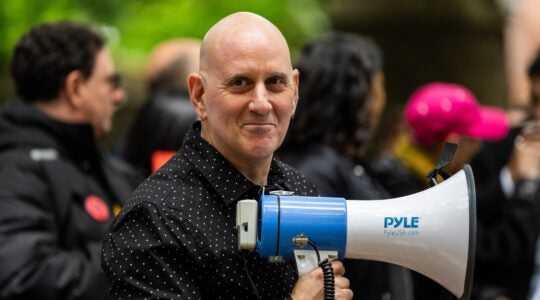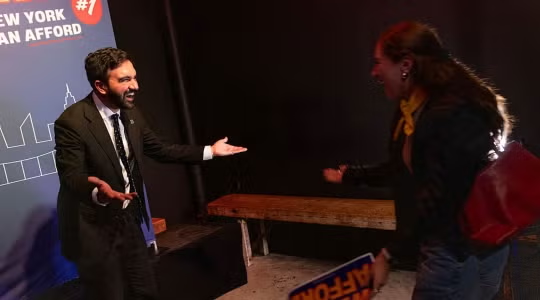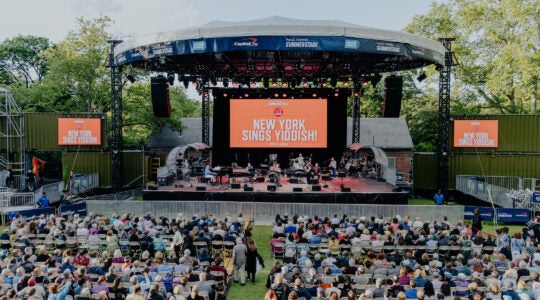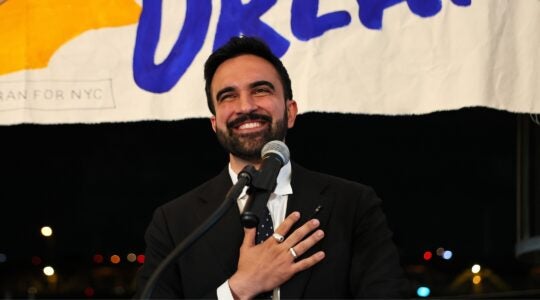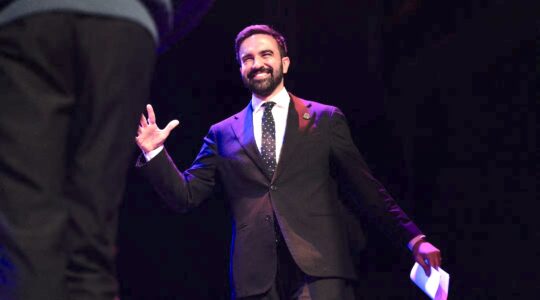When the opportunity arose to visit Morocco — a place that had been on my travel “bucket list” for some time — last November, I didn’t really know what to expect. Most of my impressions were formed from reading The New York Times travel pages and seeing pictures of Moroccan-Jewish friends at pre-wedding parties and b’nei mitzvah with their henna markings and intricately embroidered djellabas, or caftans. Visions of clay tagine pots and hamsas, spices and souks galore filled my head — along with, of course, scenes (“Play it, Sam,” “Here’s looking at you, kid”) from “Casablanca.”
While most of those images and descriptions proved to be accurate, Morocco is so much more — a modern, Europe-meets-the Middle East, Francophone country that happens to be mostly Muslim. I wasn’t sure about how “out” I could be as a Jew (and a Western woman), but was ready for the adventure.
Admittedly, I was a bit nervous as to how my status might be perceived, despite the fact that I was a participant in a government-sponsored press trip for Jewish journalists. When I wrote on the visitors’ entry form at Mohammed V International Airport that I was a journalist, I was then asked by the airport official which publication I wrote for. I hesitated slightly before giving the name of NJJN’s parent publication, the New York “Jewish” Week.
Indeed, I had little to be concerned about during my stay in the kingdom, which I found to be very cosmopolitan and modern. English and French are spoken in most places, and I found the food — including the ubiquitous cappuccino and croissants sold even at rural rest stops off the highway — exceedingly fresh and delicious.
We were privileged to visit one of the two Muslim houses of worship in the country — and the only active one — that non-Muslims are permitted to enter, the stunning Hassan II Mosque in Casablanca. I felt comfortable at this mosque, which faces the Atlantic Ocean. One of the largest in the world, it has gorgeous tiling and woodwork and reminded me of a Sephardic synagogue.
Tourism is a big business in Morocco, and Jewish tourism is no exception. I was impressed by the dedication of the Muslims who take care of the synagogues and Jewish cemeteries, the (presumably) non-Jewish boys on the streets of the mellah (Jewish quarter) who speak Hebrew, and the Muslim curator of Casablanca’s Jewish museum. A historian, she told our group how she took it upon herself to understand Morocco’s rich Jewish past, then commented to me about the “Ashkenazi” nature of my last names, “Silberman Brauner.”
Like any industry seeking to capitalize on its past, Jewish tourism is not exempt from exploitation. Off an alleyway in the Fez medina, I found myself challenging the motives of a shopkeeper selling Judaica items who told us they were “left behind” by Jews who had exited the country. Outraged at this revelation, I asked him, “Did you try to find the original owners? Put the items in a museum?” As my traveling companions, other Jewish journalists, urged me to drop my social justice crusade and leave the shop, he suddenly changed his tone and said the items had been sold to him by their owners before they departed. Hmm….
When Friday night came around, we were in the city of Marrakesh, and I was eager to both relax and experience a Moroccan-style Shabbat. We visited Beth El, a modern synagogue outside the mellah, which historically had been the center of the Jewish community, and I remember wondering if I would be able to follow the liturgy. For example, at Friday night services, Moroccan Jews take turns reciting verses from the Song of Songs, which uses romantic imagery to depict God’s relationship with the Jews. It is a beautiful way to usher in Shabbat, and I was both thrilled (and relieved) that the spirited singing of “Lecha Dodi” was in the same melody as back home!
We returned to the synagogue after Shabbat for Arvit (Ma’ariv) and Havdalah. This time, I was struck by the intensity of the prayers but confused by the passing around of large mint sprigs. It turns out the leaves were the Sephardic version of the “besamim” (spices) that, as part of the Havdalah ceremony, traditionally revive one’s senses and signal a return to the regular week. I was mesmerized by this multi-sensory experience.
And while it was unrealistic for me to shlep home a large tagine pot or sack of spices, after days of poring over the merchandise in the mazes of souks, I did find, in addition to a wooden chess set, a beautiful, tagine-shaped ceramic salt-and-pepper holder. Despite my hope of bargaining for a memento like that in the marketplace, in the end, I found an inexpensive one at a gift shop — in the airport.
Lori Silberman Brauner is deputy managing editor of our sister publication, the New Jersey Jewish News.
The New York Jewish Week brings you the stories behind the headlines, keeping you connected to Jewish life in New York. Help sustain the reporting you trust by donating today.
